Termites have mastered agriculture 25 million years before people
The most ancient farmers on Earth
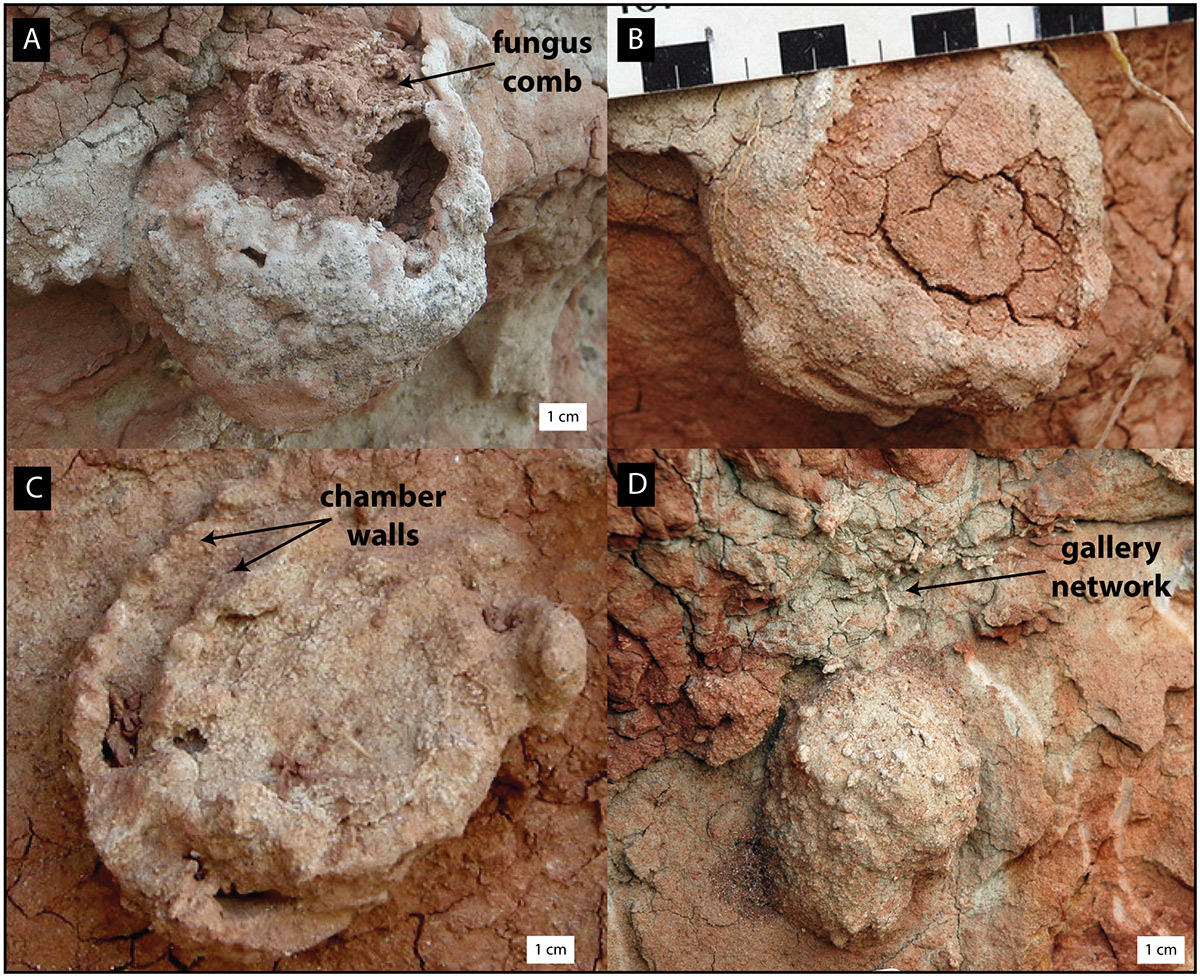
Photos of petrified thermite nests with remains of mushroom farms.
Termites are ancient insects related to cockroaches. Unlike cockroaches, they lead a social life: they build nests, jointly care for their offspring and distribute responsibilities among family members. The social hierarchy and lifestyle of termites are the subject of close study, and scientists have managed to pick up another element of this puzzle. Fossil remains of nests built by termites 25 million years ago have been found on the exposed rocks of the rift basin of the drainless lake Rukwa in southwestern Tanzania .
A detailed study of the nests showed that, next to the residential area in the nest, there are fenced mushroom plantations with an intricate system of fields constructed in accordance with a complex plan. It is known that this culture of fungi can grow in such conditions only under the condition of cultivation . This is the most real farming in its usual form, but only on a microscale.
Thus, termites grew their food 25 million years ago, long before the appearance of people. According to researchers, this is the oldest evidence of agriculture on the planet. Perhaps it was the termites who belonged to the invention of agriculture, and not to people.
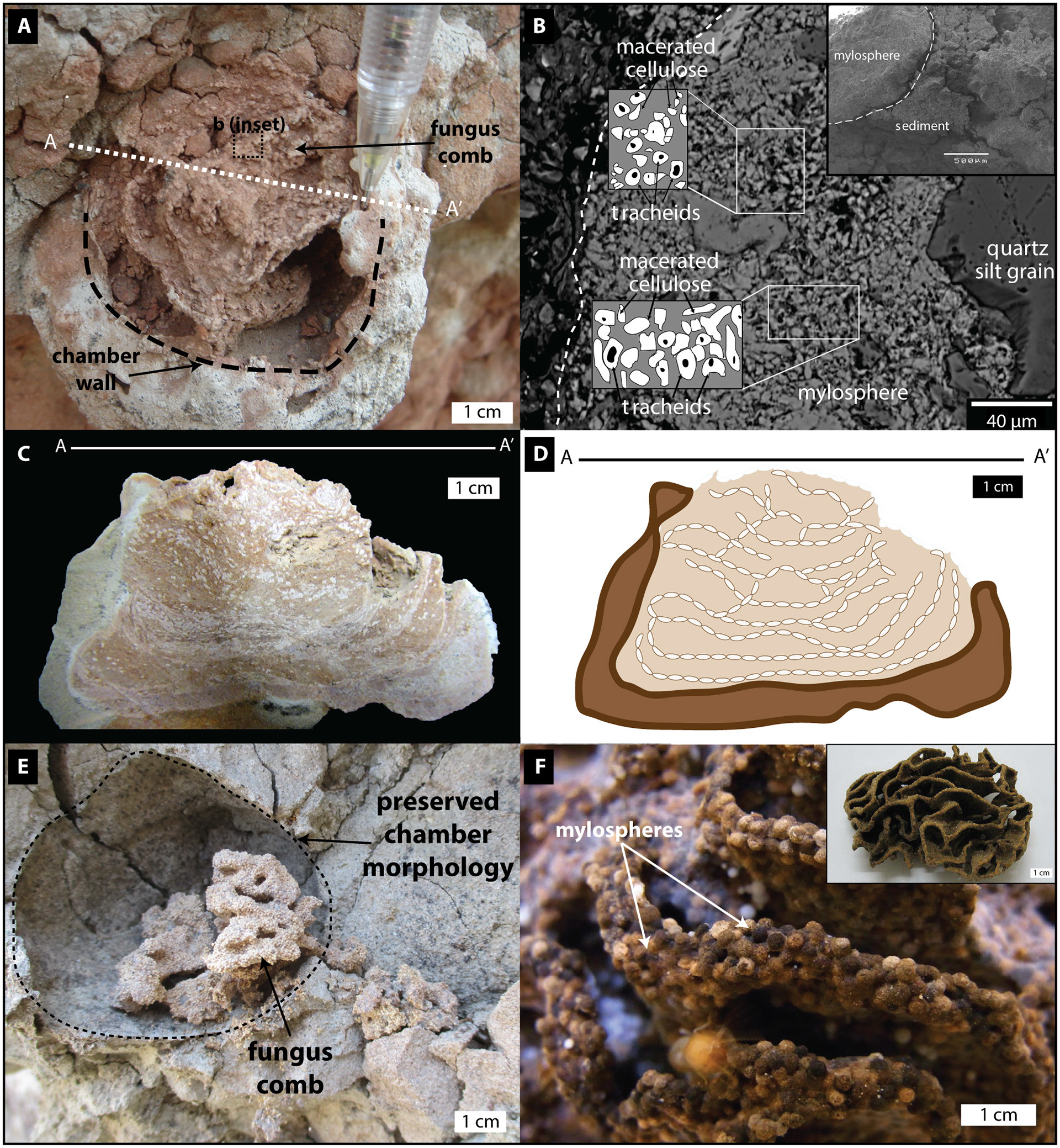
Comparison of ancient fossils of thermite farms with the thermite nests of the modern era.
The found fossils allow scientists to more accurately date the evolutionary symbiosis of termites and fungi. According to new estimates, this symbiosis began about 31 million years ago, says Eric Roberts, a geologist at the Australian University James Cook, lead author of scientific work.
In virtually all of Africa, massive, edible “thermite mushrooms” are widely known, which are grown for themselves by tiny insects. But scientists until the middle of the 20th century did not understand the true meaning of these objects and what actually happens in the termites colonies.
When biologists cut and carefully examined the thermite mounds (termitaries), sometimes as tall as a man, they found dozens of mutually united chambers built specifically for breeding mushrooms.
It turned out that termites form an obligate symbiotic relationship with this particular type of fungi, that is, they cannot live without each other. Termites chew on indigestible plant material and form tiny granules of it - milosphere, which are seeded with tiny mushroom spores. When the mushrooms grow, the working terms harvest, and then the whole colony eats it. In the process of growth, the mushrooms at the same time break down the previously inedible plant material, making it edible. According to experts, in this way termites process up to 90% of dry wood in semi-arid savannah ecosystems, which makes termites a powerful landscape-transforming force.
Previous studies of molecular biologists on mitochondrial DNA made it possible to suggest the origin of such obligate symbiotic relations of termites with fungi about 25-30 million years ago. But so far there has been no physical evidence that agriculture from termites appeared in that time span. The most ancient fossilized mounds of termites dated to the Late Miocene, that is, 7-10 million years ago.
To obtain such evidence, important for evolutionary history, a grant was allocated from the National Science Foundation for an international expedition to Lake Rukva with the famous rift - a large linear depression in the earth's crust, which was formed at the point of rupture of the crust as a result of its stretching or longitudinal movement.
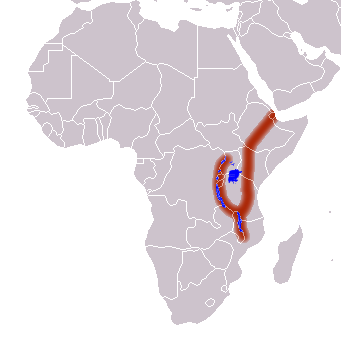
Location of the Great Rift Valley
In the ancient hollow of Tanzania’s Lake Rukwa, biologists have found fossils of thermite structures built millions of years ago. Among them were two thermite farms. Very well-preserved nests once inhabited termites. Each of the nests contained several chambers about the size of a tennis ball, and in them were fossilized mushrooms and granules of plant material — the milospheres, which were used to breed mushrooms. On the surrounding stones, scientists have determined the time of the construction of thermite farms: 25 million years.
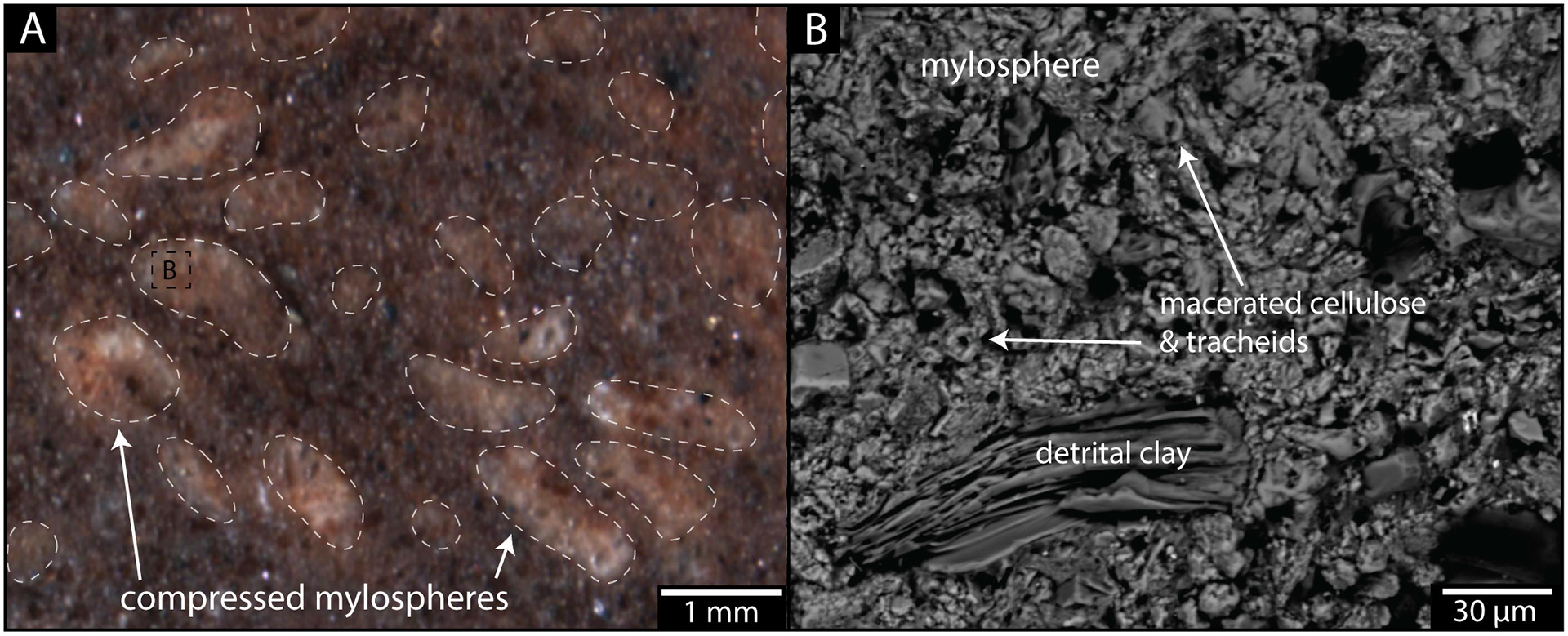
The structure and composition of the surviving milosphere
Scientists believe that thanks to farming, termites managed to survive and flourished in rapidly changing environmental conditions. The ecosystem was transformed from lush tropical forests to arid semi-desert, but thanks to fungi, termites successfully turned dried wood into food for themselves.
Becoming farmers, termites were much better adapted to life in any conditions, which contributed to their rapid spread throughout the continent.
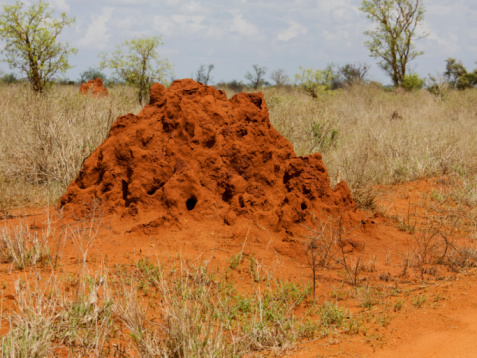
Termite grass.
By the way, termites were not the only creatures that practiced agriculture and planted mushrooms for wood processing. The same thing was done by leaf cutter ants in the Americas. About 10 million years ago they started growing Leucocoprinus mushrooms in anthills.from the family Agaricaceae , fertilizing them with the milosphere from the leafed chewed mass cut by the working ants ( clarification from the anteaters: Ants of the genus Atta cultivate the fungi of the genus Leucoagaricus (beloshampignon), ants of the genus Acromyrmex are the fungi Leucocoprinus (belonavozni)).
Scientists also suspect that approximately the same tens of millions of years ago began to make flat-bugs , which carry sporangia on themselves for storing spores of symbiotic tree-destroying fungi.
The study of agricultural farms of termites with an age of 25 million years shows that the cultivation of food by social insects has evolutionary advantages - it allows us to survive in difficult natural conditions and establish colonies in almost any climate. Termites settled all continents on the planet, except Antarctica.
About 24,988,000 years after termites, people also discovered this winning strategy.
The scientific work was published on June 22, 2016 in the journal PLOS One (doi: 10.1371 / journal.pone.0156847).
